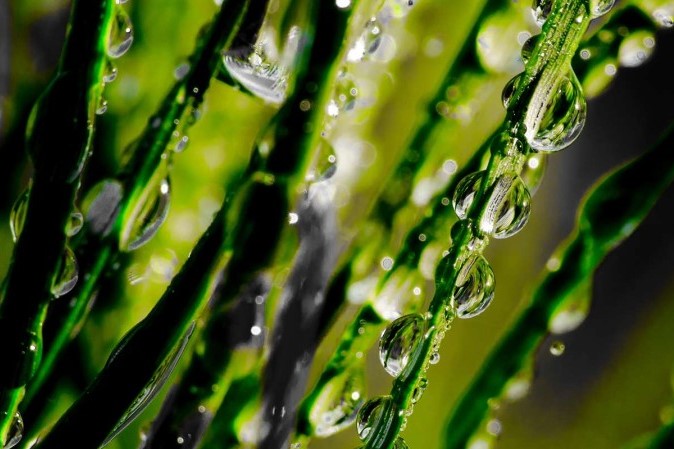 How sustainable forestry can positively influence the water cycle
How sustainable forestry can positively influence the water cycle
From buffer zones to continuous-cover forestry (CCF), sustainable forestry methods can help forests regulate the quality and availability of water.Water may be the giver of life, but forests are the providers of water. According to the United Nations Food and Agriculture Organisation (FAO), three-quarters of the world’s accessible freshwater comes from forested watersheds.
From intercepting rain through their leaves to absorbing groundwater through their roots, forest trees regulate the water quality and availability for daily domestic, agricultural, industrial and social use downstream. However, forest water management is a delicate balancing act and sustainable forestry plays a vital role in keeping clean water flowing.
The importance of water management in forestry
Forests’ relationship with water benefits the local environment in myriad ways. They withdraw, hold and release precipitation gradually. They protect against erosion, flooding and landslides. They promote the biodiversity of aquatic species, produce clean drinking water, and transport an essential ingredient in food production. But forests can also have far-reaching negative effects on watercourses, such as reduced flows and pollution, if mismanaged.
Take sedimentation, for example. On the one hand, upturning mineral soils during forestry operations can release extra sediments into water courses, reducing their quality. On the other hand, sustainable forestry methods can help purify the water by trapping and filtering sediments from upstream activities.
The risk of sediment release is higher in drained peatland forests as their ditches are more susceptible to erosion. In Finland, almost six million hectares of peatland has been drained for forestry, which Mika Nieminen, Principal Scientist at Natural Resources Institute Finland (Luke), believes is the main contributing factor to sedimentation and nutrient exports. “Drained peatlands are by far the greatest source of nutrients to watercourses, with approximately 80% of the nutrients discharging from forest land in Finland due to forest drainage.”
Using sustainable forestry to benefit the water cycle in Finland
Whether preparing the soil for regeneration or harvesting the forest for wood production, there is a wide range of methods that forest experts can employ to positively influence the water cycle.
For instance, the Forest Stewardship Council™ (FSC™)* mandates that all surface watercourses in forests should have buffer zones where no excavation operations are permitted, while soil disruption should also be minimised during soil preparation to limit sediment and nutrient exports.
According to Nieminen, conveying the waters through natural or restored wetland buffers is an efficient way to reduce nutrient and sediment exports. He believes “it’s of utmost importance to manage soil water levels and peat mineralisation in drained peatlands. All methods that keep water levels higher, slow down water movement and increase water retention in peatlands could be efficient. Such methods would include different types of dams, restoration of peatlands and managing peatland forest using continuous cover forestry (CCF) instead of even-aged forestry.”
CCF ensures there is a continuous tree cover, which increases evaporation and prevents water levels from rising too high, thus reducing the need to directly manage the water level. With CCF, “soil water levels are maintained sufficiently low by the evapotranspiration of the continuously maintained tree stand, so that ditch cleaning operations may become unnecessary,” says Nieminen. “Avoiding ditch cleaning operations decreases the export of sediments. Furthermore, harvesting is much less intensive in terms of harvested stand volume and intensive soil preparation methods, such as ditch-mounding, are not used.”
UPM uses CCF in fertile areas where trees grow well and is aiming to only use CCF in nutrient-rich peatland in the future. What’s more, UPM restores bogs and springs in managed forests, while also removing water barriers for migratory fish so they can access their breeding grounds.
Managing water in UPM’s Uruguay forest plantations
UPM’s forestry operations in Uruguayan eucalyptus plantations differ from Finland’s boreal forests, but the desire to achieve the best growth conditions while protecting watercourses remains the same. “To promote forest activity, we don’t physically manage water, like digging ditches, but we do aim to minimise the effect of the plantations on the water flows by keeping lowland sites clear of trees and maintaining a buffer area covered with grasslands between plantations and water streams,” says Ricardo Methol, UPM Uruguay’s Technical Development and Planning Manager.
In Uruguay’s temperate climate, Methol says “there is more than enough rainfall evenly distributed throughout the year to sustain productive forest plantations without compromising water-related environments or water availability for downstream users”. However, UPM still monitors the various groundwater, rainfall, and superficial water to compare the different hydro cycles in forest plantations and natural grasslands. In this way, UPM Uruguay can refine its forestry operations and ensure its activities are not having a negative impact on the local water flow.
Forests consume, store and release water in different ways. Working to identify, assess, mitigate and then measure the local water flow for each specific forest is, therefore, a fundamental part of sustainable forestry; one that ensures forests remain a key contributor to our daily lives.
